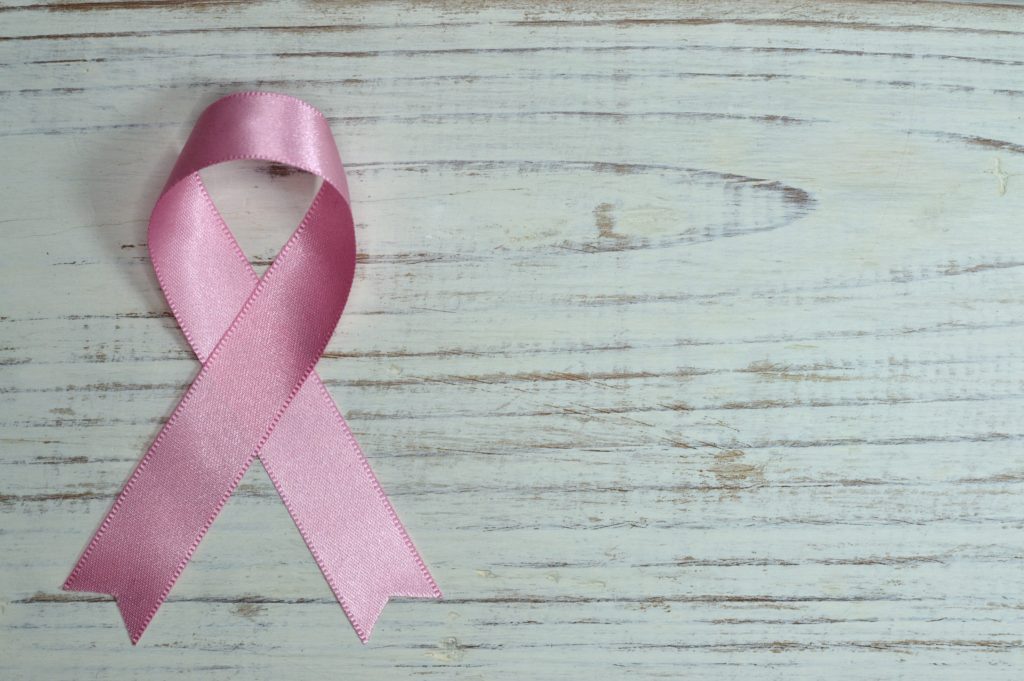As the sun sets on summer, we welcome the cool breeze of fall with open arms. Autumn is the season for crunchy leaves, tailgates, pumpkin spice, and…pink ribbons. October is Breast Cancer Awareness Month, and those ribbons serve good purpose as one in eight women will be diagnosed with breast cancer in their lifetime. With the exception of some skin cancers, breast cancer is the most commonly diagnosed cancer in all women, and the second leading cause of cancer death, second only to lung cancer.
Know the Facts
According to the CDC, 11 percent of those diagnosed with breast cancer will be under 45 years old. The majority of young diagnoses will be given to African American women, a group more likely to die from breast cancer than whites or other non-white ethnic groups. Though far more common in women, over 2,500 men will be diagnosed with breast cancer this year.
After an increase in the later 20th century, incidences of breast cancer began to drop. Among those diagnosed, the death rates have been decreasing since the late 1980s. This is likely due to increased awareness, early detection, and advances in treatment.
So what can we do to take control of our own breast health? It comes down to knowing your breasts and knowing your risk factors.
Know Your Breasts
In addition to screening such as mammograms, MRIs, and annual visits with your health care team, knowing what your normal is can be critical in monitoring breast health.
Common presentations of breast cancer are:
- New lump or mass
- Swelling of the breast (even if no distinct lump can be felt)
- Breast or nipple pain
- Changes in the overlying skin (dimpling like an orange peel, redness, scaling, flaking)
- Nipple discharge (other than breast milk)
- Nipple turning inward or pointing in a different direction
- Pain in the breast
- Swollen lymph nodes or lumps in the armpits or under the collarbone
Many of the above can be a subtle change, so it is important to know what’s normal for you. Check your breasts out in the mirror from different angles and position, and notice how they fall. For breast self-exams, run soapy hands over them in the shower to feel for any lumps and bumps. If you’re menstruating, you can do this about seven days after your period when you’re less tender, and if not, the first of every month is a great way to make sure it gets done. Also, don’t discredit your partner’s input. Discuss with them the importance of sharing if they notice or feel anything different with your breasts because four hands are always better than two!
Keep in mind, not all lumps and bumps are suspicious, and even many of those needing more testing will end up benign. It is still important, however, to bring anything suspicious up to your provider, and don’t be afraid to push if you feel like you aren’t getting answers. Just because breast cancer is less common in those who are younger doesn’t mean it doesn’t happen. Some of the most gut wrenching stories I have heard are those in which the person had breast changes blamed on breast feeding or were told to come back in 6-12 months to consider testing at that time. If you express your concerns and don’t feel like you’re improving, go back. Be the squeaky wheel. There is nothing wrong with being your own advocate.
Know Your Risk Factors for Breast Cancer
In medicine, we tend to separate risk factors into two categories: modifiable (meaning things you can change), and non-modifiable (meaning you’re kind of stuck with them).
Non-modifiable risk factors for breast cancer are:
- Increasing age
- A first degree (mother, sister, or daughter) relative who has been diagnosed with breast or ovarian cancer, especially if diagnosis was at age 45 or younger
- Ashkenazi Jewish background
- Personal history of breast cancer
- History of radiation therapy to the chest
- Inherited genetic mutation: with the BRCA1, there is an average 72 percent lifetime risk of developing breast or ovarian cancer. With BRCA2, the risk is 69 percent. BRCA positivity tends to lead to diagnoses in younger women. Men with BRCA2 have a lifetime breast cancer risk of about 6.8 percent. Other gene mutations associated with an increased breast cancer risk include PALB, CHECK2, ATM, BARD1, PTEN, TP53, NF1, CDH1, NBN and STK11. As research and screening improves, there are many people who are assessing their genetic risk and acting ahead with prophylactic, preventative surgery, or increased surveillance.
Modifiable risk factors for breast cancer are:
- Obesity and a sedentary lifestyle: excess estrogen produced by extra fatty tissue is linked to breast cancer formation. The easiest way to combat this is to maintain a healthy weight and aim for 30 minutes of exercise a day.
- Alcoholism: alcohol can increase levels of hormones associated with some breast cancers and can also damage DNA in cells leading to non-hereditary genetic mutations
- Carcinogenic exposure: cigarette smoking and excess consumption of red meat can lead to formation of breast or other cancers
- Hormonal exposures: lifetime exposure to estrogen and other hormones can contribute to some breast cancers. Later age of first menstruation, a pregnancy before age 30, and breast feeding have all been found to reduce breast cancer risk. While this is in part due to genetics, there are some steps you can take to reduce your exposure.
What Happens Next
With the information provided here, you are now equipped with what you need to take your breast health into your own hands (literally your own hands, with breast self-exam). Reflect on what you’ve read, check out the resources listed below, interview your family members, and gather a better idea of where you stand in terms of overall risk. The next time you meet with your provider, you will be empowered and prepared to deepen your discussion and ready to discuss your next steps.
Resources to Dig Deeper
Breast self-exam and screening:
- Know Your Lemons works with breast health and cancer awareness. It includes infographics and a fun, interactive app to help you become confident in breast self-exams.
Risk factors:
- Bright Pink has a wonderful interactive quiz that can assess your risk factors and help you take the next steps toward taking control of your health.
Hereditary breast (and other) cancers:
- FORCE contains a wealth of information.
If you are not familiar with your breasts or your risk factors, now is the perfect time to get started. Learn how to do a self exam, understand your family history, and make sure you are advocating for your own breast health.












